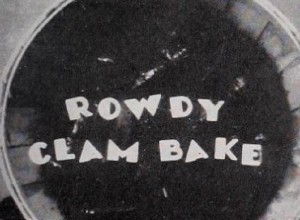
"Wilbur W. Krimpen's Rowdy Clam Bake is a sure source of delight for all lovers of food, drink or shuffleboard. It is a charmingly informal treatment of a clam bake through the successive stages of food preparation, cocktail time, shuffleboard (to whet appetites) and, ultimately, food consumption. In addition to its entertainment value, Rowdy Clam Bake rates high for its informative aspect, as it provides a step by step study of what constitutes a successful clam bake. The ingredients involved will not be listed here, lest the reader's credulity be strained. However, the film's parting shot, a closeup of an Alka-Seltzer container, is indicative of the epic dimensions of the feast." Movie Makers, Dec. 1948, 491-492.
Amateur film footage of King George VI and Queen Elizabeth in Victoria, B.C. during the 1939 royal tour of Canada.
"Home movie film record of the 1939 royal visit by King George VI, showing preparations on the streets of Vancouver and the vicinity of the Hotel Vancouver, a parade, and the royal motorcade" British Columbia Archives.
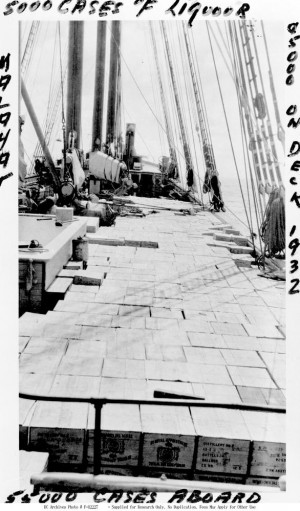
"Depicts a rum-running expedition from Victoria to "Rum Row" off the California coast with the mother ship M.V. Malahat. The tender M.V. Hickey is shown transferring cases of liquor to American vessels and avoiding US Navy cutters. At San Martin Island, Mexico, the Hickey puts in for repairs." (BC Archives)
NOTE: The original reversal film was lost in the 1990s after being sent out for video transfer in Vancouver. Only the BC Archives analog video transfer is extant.
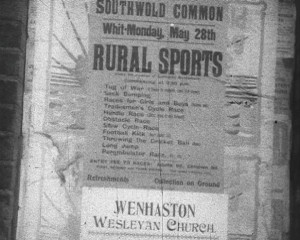
"This is a record of a rural sports day held on Southwold Common on Whit Monday, 1928. (Identified on a still of a poster.)" (EAFA Database).
"On May 28th 1928, Whit Monday, Barrett filmed the races and prize giving of the “Rural Sports”, held on the common. These sports had flourished before the First World War, and this was an attempt to revive them. Although on the film everyone seemed to be enjoying themselves, these Rural Sports were not held again. Barrett Jenkins was pleased with the results of his filming, and so continued" (Cleveland 2009, 139).

"Russian Easter is a reverent and impressive film of the celebration of Easter in the Russian Orthodox Church and in the homes of Russians living in this country, all presented against the background of the birth of spring. Easter in the Russian Church is more closely associated with the coming of spring than it is in some other faiths, and the antiphonal cry, "Truly Christ is risen!" finds its response in leafing trees, budding flowers and virescent hillsides. Accordingly, this is a joyful film, filled with the gladness of Easter and of spring. The rich liturgy of the Easter season in the Russian Church is presented with intelligently planned sequences that span the time from the beginning of Lent to three days after Easter. Interwoven are sequences of home life, as the household prepares for the celebration and the feast at Easter. So, the picture actually consists of three themes — Easter in the church, Easter in a private home and the coming of spring, all interrelated by a masterly handling of film planning and editing. Outstanding scenes in this picture are the shots of Church of Alexander Nevsky in the winter snow, looking like a color print of old Russia, and the shots of the dinner, after Easter services, when family and guests eat the traditional Easter dishes. This latter sequence has particular grace and charm. Mr. Serebrykoff has made a sincere and delightful film that bolsters one's faith in the future of amateur movie making, for he has produced a brilliant picture that could be made only by an amateur in the full and accurate sense of the word — a film that would have been profaned by professionalism." Movie Makers, Dec. 1942, 489.
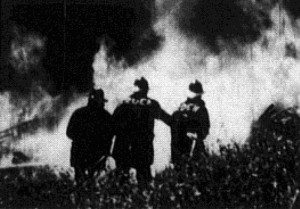
"Civil defense is the theme and purpose of this bit of realism-disaster, fire, dead, and injured. How the emergencies are met through planning and co-ordination of the fire department, police, medical corps, volunteers, and ham radio operators. The film is descriptive of the hundred and one things that must be coordinated to meet a disaster. A good civil defense picture" PSA Journal, Oct. 1961, 49.
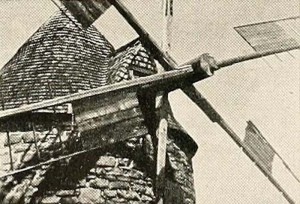
"The majesty of one of North America's greatest rivers is the theme of Walter Downs's Saga of the St. Lawrence. Stunning Kodachrome views of this mighty stream picture it from the decks of a river steamer. The ship is used as a mechanism for carrying the continuity theme forward and for providing smooth "trucking" shots of the passing shoreline. Brief stops offered the opportunity for sequences that show the character of the country and its people with the sympathy and understanding of one who knows the region well. These also punctuated the film in a pleasant and interesting fashion. The picture is accompanied by a musical background and some sound effects, all done by double turntable. This is a gracious and capable film of high photographic quality." Movie Makers, Dec. 1937, 630.
"Edited film shot during the Franco-American Expedition to Algeria which was sponsored jointly by the Logan Museum of Anthropology, Beloit College, and the Algerian government. Led by Alonzo Pond, Byron Khun de Prorok, and Maurice Reygasse, the expedition traveled from Biskra to Tamanrasset and back in three specially constructed Renault vehicles in October and November of 1925. The expedition excavated both prehistoric and ancient Sahara habitations and observed various Hoggar Tuaregs. Film features excavations on the ancient tombs near Tamanrasset (including the tomb of Queen Tin-Hinan, ancestral mother of the Tuaregs), French colonial outposts, encounters with Tuareg chiefs, and a wrestling match, a slave tent, and head shaving in a Tuareg camp," Human Studies Film Archives.
Total Pages: 79